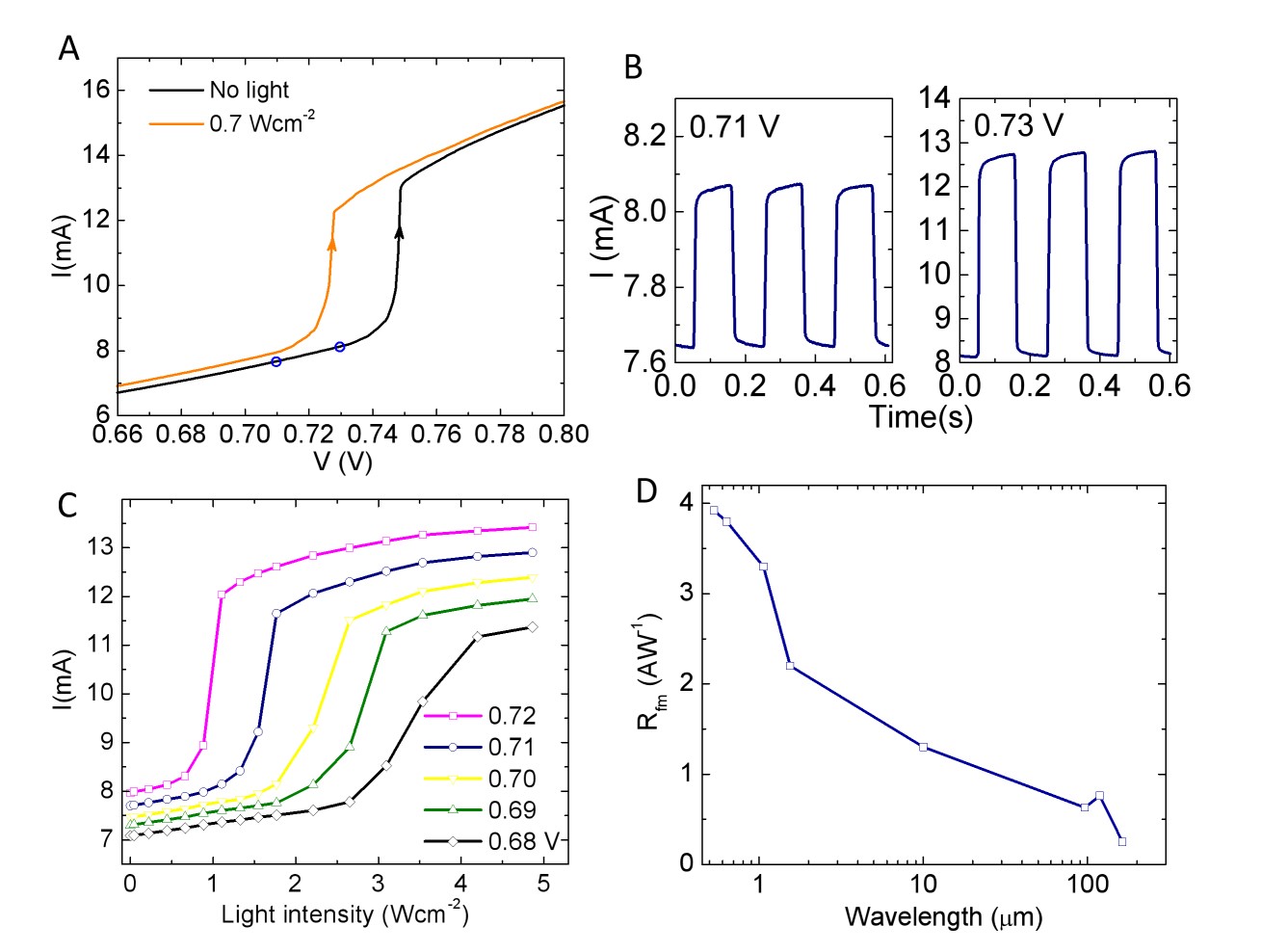Science Advances reports ICQM Faculty members Nanlin Wang and collaborators’ work on uncooled, ultrabroadband photosensitivity from visible to terahertz wavelengths based on 1T-TaS2 CDW system.
The ability to convert light into electronic signal is critical in photoelectronics.The effect has broad applications ranging from imaging,communication, quantuminformation to space science. However, highsensitivity to light over a broad spectral range, especially in low frequenciesdown toTHz at room temperature, is particularlyrare but meritorious. Conventional semiconductors, such as silicon,gain the photoresponse properties through the single-particle excitationsacross the band gap and are transparent to the energy below thegap to THz photons. On the other hand, the photoresponse propertiesof simple metals or very narrow-gap semiconductors suffer seriouslyfrom free-carrier screening and fast-quenching effect, especially atelevated temperatures. Solids with collective electronic states,on the contrary, can have an electronic response in a collective fashionand behave quite differently from the single-particle excitations.
Charge density wave (CDW) is one of the most studied collectiveelectronic states in solids. Different fromordinary metals in which onlysingle-particle excitations exist, CDWmaterials also have collective excitationsbeing referred to as an amplitude mode and a phase mode.Amplitude excitation behaves as optical phonons and is not expectedto have a direct effect on the electric transport properties, while phaseexcitation corresponds to the translationalmotion of theCDWcondensateand can have a marked effect on charge transport properties. Thephasemode is usually pinned at finite frequency. By applying a dc electricfield, the phase mode can be driven into a current-carrying state, beingusually referred to as sliding CDW, leading to nonlinear I-Vcharacteristics as long as the field is higher than a threshold value.
As one of the most studied CDWcompounds of 2D transition-metal chalcogenides, 1T-TaS2 hosts multiple equilibrium states arising fromthe interplay between electron correlation, lattice strain and Fermi surface instability. Upon coolingacross ~550 K, the system transfers from a simple metal into an incommensurate (IC-) CDW state withan associated modulations of lattice distortions. The distortions sharpen to formstar-shaped polaronclusters and become nearly commensurate (NC-) below Tc (~350 K), being referredto as the phase of NC-CDW. Further cooling leads to another first-order phase transition near 183 K,below which the system becomes a gapped commensurate (C-) CDW state. These variations have made1T-TaS2 an ideal playground for investigating CDW dynamicsand novel metastable statesvia external manipulations.
Recently, Dr Dong Wu in Prof Nan Lin Wang’s group at ICQM of Peking University and collaborators reported that incident illuminationscan induce significant changes in the electronic properties of 1T-TaS2when the bias voltage is close but slightly lower than the threshold that leads to the charge density wave slip. A very large photoelectric response effectwith current responsivities on the order of ~1 AW−1 at room temperatureis induced and observed over a wide range of photon energy from ultraviolet to terahertz. The revealed charactershave direct relations with the inherent collective electronic dynamics of the CDW state and the resultsmay extend well beyond the 1T-TaS2 material case. The advantages of uncooled and ultrabroadbandphotoresponse make this 2Dchalcogenide highly attractive forexploring more efficientphotoelectronics, such as novel memory devices,photodetectors and spectroscopy, from bothexperimental and theoretical perspectives.
Dr. Dong Wu in Prof. Nanlin Wang’s group is the leading author of this work. The paper was published on Science Advances on August 1, 2018 (http://advances.sciencemag.org/content/4/8/eaao3057).Prof. Yongchang Ma at Tianjin University of Technology, Prof. Ziran Zhao’s group at Tsinghua University and Prof. Jian Wei’s group at ICQM collaborated on this project. The work was supported by the National Science Foundation of China, the National Key Research and Development Program of China, and the Collaborative Innovation Center of Quantum Matter in Beijing, China.
Figure. The photoresponse properties of 1T-TaS2 at room temperature in Near commensurate CDW phase. A: Thephotoresponse of dc electrical current of a device for voltage sweep up mode. B: The typical current switching effects. C: The photoresponse spectra under various biases and illuminations.The currentresponse as the function of incident intensities was investigated at illumination of λ = 1550 nmfor applied voltages below the initial threshold of dark. D: The ultrabroadbandphotoresponsivity.
